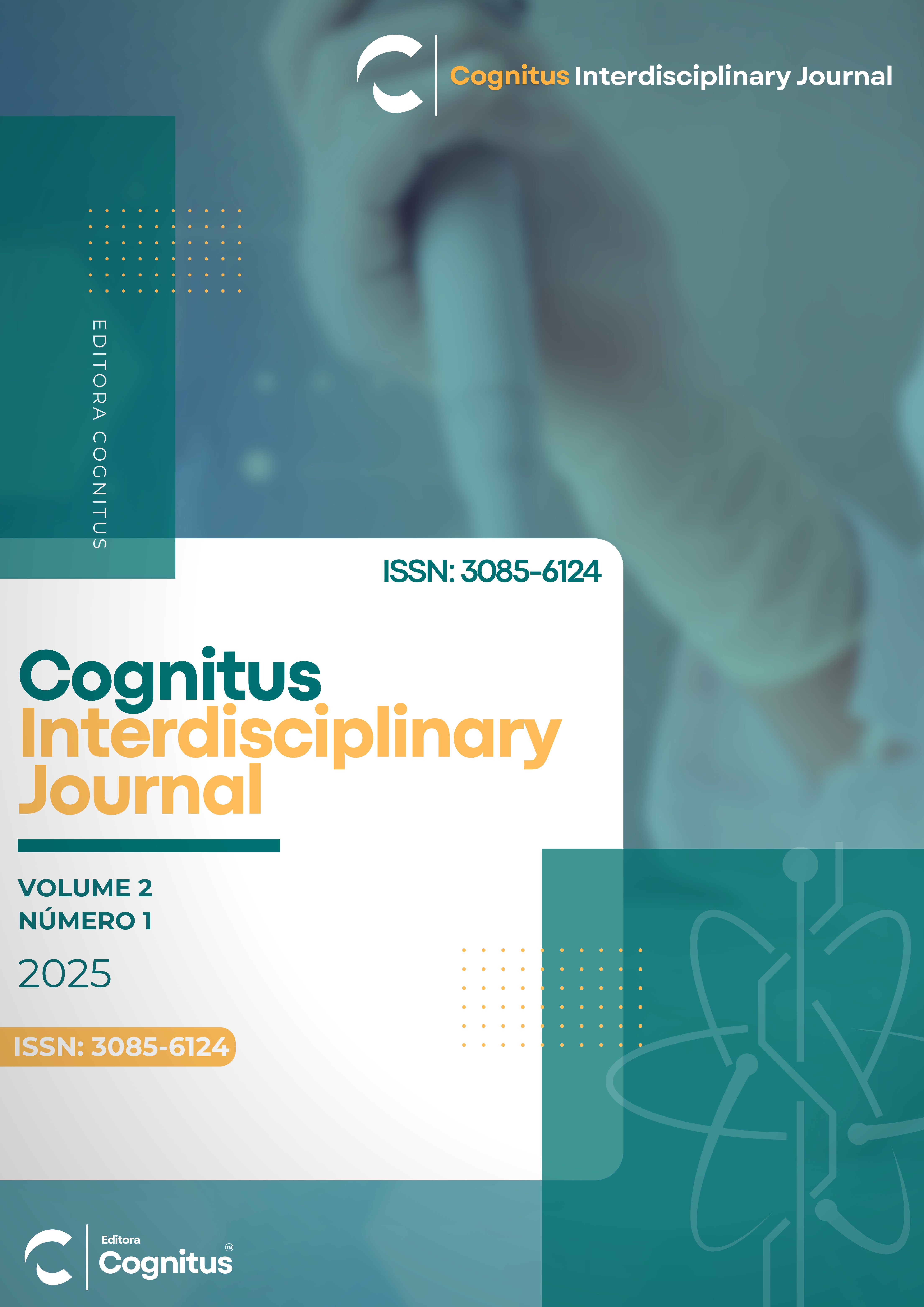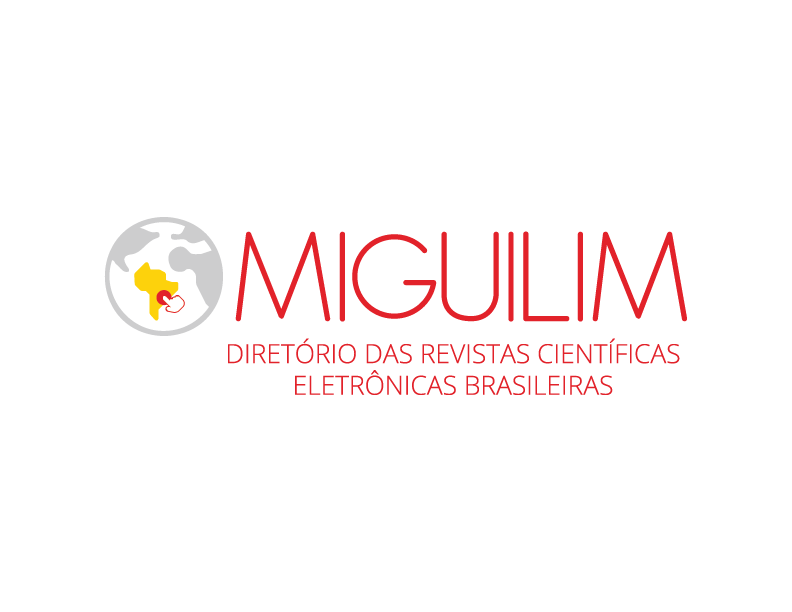Avanços, Desafios E Estratégias Em Terapias De Feridas: Abordagens Conservadoras, Tecnológicas E Biopoliméricas
DOI:
https://doi.org/10.71248/9wgnq916Palavras-chave:
Biopolímeros, Cicatrização, Curativos Oclusivos, Ferimentos e Lesões, Tecnologia BiomédicaResumo
O tratamento de feridas representa um desafio clínico significativo, demandando estratégias que combinem abordagens tradicionais e inovações tecnológicas. O artigo analisa avanços em curativos a vácuo, biopolímeros e materiais baseados em nanotecnologia, promovendo cicatrização mais rápida e eficaz. A pesquisa utilizou uma revisão integrativa da literatura com bases de dados como PubMed, Scopus e ScienceDirect, abarcando publicações entre 2019 e 2024. Os resultados destacam avanços significativos no uso de curativos a vácuo, biopolímeros e materiais baseados em nanotecnologia, promovendo cicatrização mais rápida e eficaz. Apesar disso, persistem desafios, como personalização de tratamentos e adaptação de biopolímeros às diferentes necessidades. A combinação de métodos tradicionais e tecnologias emergentes tem potencial para otimizar os cuidados, acelerar a regeneração tecidual e melhorar a qualidade de vida dos pacientes. O estudo conclui que abordagens integradas e multidisciplinares, aliadas a novos desenvolvimentos tecnológicos, são essenciais para superar as barreiras no tratamento de feridas complexas.
Referências
1. Oliveira AC de, Rocha D de M, Bezerra SMG, Andrade EMLR, Santos AMR dos, Nogueira LT. Qualidade de vida de pessoas com feridas crônicas. Acta Paulista de Enfermagem. março de 2019;32(2):194–201.
2. Figueira TN, Backes MTS, Knihs N da S, Maliska ICA, Amante LN, Bellaguarda ML dos R. Products and technologies for treating patients with evidence-based pressure ulcers. Rev Bras Enferm. 2021;74(5).
3. Lima RVKS, Coltro PS, Farina Júnior JA. Negative pressure therapy for the treatment of complex wounds. Rev Col Bras Cir. fevereiro de 2017;44(1):81–93.
4. Whittemore R, Knafl K. The integrative review: updated methodology. J Adv Nurs. 2 de dezembro de 2005;52(5):546–53.
5. Mecott GA, González-Cantú I, Dorsey-Treviño EG, Matta-Yee-Chig D, Saucedo-Cárdenas O, Montes de Oca-Luna R, et al. Efficacy and Safety of Pirfenidone in Patients with Second-Degree Burns: A Proof-of-Concept Randomized Controlled Trial. Adv Skin Wound Care. abril de 2020;33(4):1–7.
6. Marone EM, Rinaldi LF, Fedorov S, Sharypova I, Tishchenko AL. New trends in chronic vascular wounds healing. Italian Journal of Vascular and Endovascular Surgery. agosto de 2018;25(3).
7. Swetha Menon NP, Kamaraj M, Anish Sharmila M, Govarthanan M. Recent progress in polysaccharide and polypeptide based modern moisture-retentive wound dressings. Int J Biol Macromol. janeiro de 2024;256:128499.
8. Schultz J, Wruck JE, Trips E, Pfeiffer R, Grählert X, Münchow S, et al. Semi-occlusive management of fingertip injuries with finger caps: A randomized controlled trial in children and adults. Medicine. 8 de julho de 2022;101(27):e29324.
9. Souza SC de, Mendes CMC, Meneses JVL, Dias RM. Simplified vacuum dressing system: effectiveness and safety in wounds management. Acta Cir Bras. 2022;37(9).
10. Verma D, Okhawilai M, Nangan S, Thakur VK, Gopi S, Kuppusamy K, et al. A sustainable and green approach towards the utilization of biopolymers for effective wound dressing applications: A detailed review. Nano-Structures & Nano-Objects. fevereiro de 2024;37:101086.
11. Balestra N, Fredericks S, Silva AVC da, Rodrigues RCM, Nunes DP, Pedrosa RB dos S. Driveline dressings used in heartmate patients and local complications: A retrospective cohort. Heart & Lung. novembro de 2023;62:271–7.
12. Wallace RG, Kenealy MR, Brady AJ, Twomey L, Duffy E, Degryse B, et al. Development of dynamic cell and organotypic skin models, for the investigation of a novel visco-elastic burns treatment using molecular and cellular approaches. Burns. novembro de 2020;46(7):1585–602.
13. Nasra S, Pramanik S, Oza V, Kansara K, Kumar A. Advancements in wound management: integrating nanotechnology and smart materials for enhanced therapeutic interventions. Discover Nano. 2 de outubro de 2024;19(1):159.
14. Ghosh R, Singh P, Pandit AH, Tariq U, Bhunia BK, Kumar A. Emerging Technological Advancement for Chronic Wound Treatment and Their Role in Accelerating Wound Healing. ACS Appl Bio Mater. 18 de novembro de 2024;7(11):7101–32.
15. Sharma A, Dheer D, Puri V, Alsayari A, Wahab S, Kesharwani P. Insights of biopolymeric blended formulations for diabetic wound healing. Int J Pharm. maio de 2024;656:124099.
16. Moreira TD, Martins VB, da Silva Júnior AH, Sayer C, de Araújo PHH, Immich APS. New insights into biomaterials for wound dressings and care: Challenges and trends. Prog Org Coat. fevereiro de 2024;187:108118.
17. Yang C, Yang C, Chen Y, Liu J, Liu Z, Chen HJ. The trends in wound management: Sensing, therapeutic treatment, and “theranostics”. Journal of Science: Advanced Materials and Devices. dezembro de 2023;8(4):100619.
18. Srivastava GK, Martinez-Rodriguez S, Md Fadilah NI, Looi Qi Hao D, Markey G, Shukla P, et al. Progress in Wound-Healing Products Based on Natural Compounds, Stem Cells, and MicroRNA-Based Biopolymers in the European, USA, and Asian Markets: Opportunities, Barriers, and Regulatory Issues. Polymers (Basel). 3 de maio de 2024;16(9):1280.
19. Sanjarnia P, Picchio ML, Polegre Solis AN, Schuhladen K, Fliss PM, Politakos N, et al. Bringing innovative wound care polymer materials to the market: Challenges, developments, and new trends. Adv Drug Deliv Rev. abril de 2024;207:115217.
Publicado
Edição
Seção
Licença
Copyright (c) 2025 Cognitus Interdisciplinary Journal

Este trabalho está licenciado sob uma licença Creative Commons Attribution-NonCommercial-NoDerivatives 4.0 International License.











